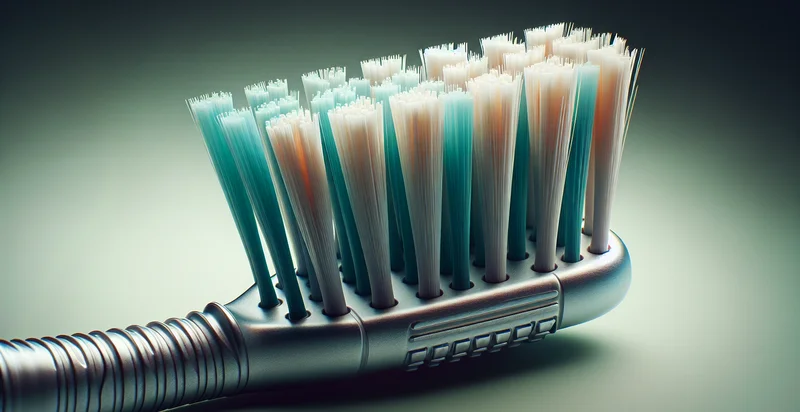Identify what material a toothbrush is made from
using AI
Below is a free classifier to identify what material a toothbrush is made from. Just upload your image, and our AI will predict what material a toothbrush is made from - in just seconds.

Contact us for API access
Or, use Nyckel to build highly-accurate custom classifiers in just minutes. No PhD required.
Get started
import nyckel
credentials = nyckel.Credentials("YOUR_CLIENT_ID", "YOUR_CLIENT_SECRET")
nyckel.invoke("what-material-a-toothbrush-is-made-from", "your_image_url", credentials)
fetch('https://www.nyckel.com/v1/functions/what-material-a-toothbrush-is-made-from/invoke', {
method: 'POST',
headers: {
'Authorization': 'Bearer ' + 'YOUR_BEARER_TOKEN',
'Content-Type': 'application/json',
},
body: JSON.stringify(
{"data": "your_image_url"}
)
})
.then(response => response.json())
.then(data => console.log(data));
curl -X POST \
-H "Content-Type: application/json" \
-H "Authorization: Bearer YOUR_BEARER_TOKEN" \
-d '{"data": "your_image_url"}' \
https://www.nyckel.com/v1/functions/what-material-a-toothbrush-is-made-from/invoke
How this classifier works
To start, upload your image. Our AI tool will then predict what material a toothbrush is made from.
This pretrained image model uses a Nyckel-created dataset and has 12 labels, including Bamboo, Biodegradable Materials, Composites, Glass, Metal, Natural Fibers, Nylon, Plastic, Recycled Materials and Rubber.
We'll also show a confidence score (the higher the number, the more confident the AI model is around what material a toothbrush is made from).
Whether you're just curious or building what material a toothbrush is made from detection into your application, we hope our classifier proves helpful.
Related Classifiers
Need to identify what material a toothbrush is made from at scale?
Get API or Zapier access to this classifier for free. It's perfect for:
- Material Verification for Quality Control: This use case involves the identification of the material composition of toothbrushes during manufacturing. By implementing the false image classification function, manufacturers can ensure that only toothbrushes made from approved materials pass the quality control process, thus maintaining product safety and efficacy.
- Compliance Monitoring for Regulatory Standards: Organizations can use this function to verify that their toothbrushes comply with relevant regulations concerning materials used in dental care products. By regularly monitoring production batches, companies can avoid potential legal issues and ensure consumer safety.
- Product Development Insights: Researchers and developers can utilize this function to analyze different materials for toothbrush design and construction. By identifying material properties and performance characteristics, companies can innovate more effectively in designing toothbrushes that enhance user experience.
- Supply Chain Transparency: Retailers and manufacturers may employ this identification function to track the materials used in their toothbrushes throughout the supply chain. This allows for greater transparency, enabling brands to communicate material sources to consumers interested in sustainability and ethical manufacturing practices.
- Recalls and Safety Alerts: In case of product recalls due to safety concerns related to material misuse, this classification function allows companies to quickly identify affected batches. It streamlines the recall process by providing accurate information on which products might be unsafe, protecting consumers and preserving brand integrity.
- E-commerce Product Verification: E-commerce platforms can integrate this image classification tool to verify the authenticity of product claims regarding toothbrush materials. This verification process helps customers make informed purchase decisions and reduces the risk of misrepresentation or counterfeit products in the market.
- Customization for Niche Markets: Brands catering to specific consumer needs, such as sensitive gums or eco-friendly options, can leverage this function to categorize toothbrush materials effectively. By understanding the material makeup, companies can tailor their marketing strategies and product offerings to align with sustainability initiatives and target consumer preferences.


